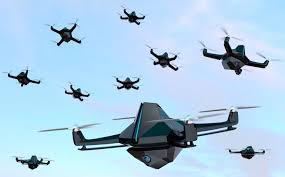Source: i-hls.com
Future multi-domain battles will require swarms of dynamically coupled, coordinated heterogeneous mobile platforms to overmatch enemy capabilities and threats.
The US Army is looking to swarming technology to be able to execute time-consuming or dangerous tasks. Swarming is a method of operations where multiple autonomous systems act as a cohesive unit by actively coordinating their actions.
Swarms of unmanned aerial and ground vehicles will now be able to optimally accomplish various missions while minimizing performance uncertainty, thanks to a development by US Army researchers..
The researchers developed a reinforcement learning approach that optimizes guidance policies for the swarming vehicles in real-time. The move will enhance warfighters’ tactical situational awareness, allowing the U.S. Army to dominate in a contested environment.
Reinforcement learning provides a way to optimally control uncertain agents to achieve multi-objective goals when the precise model for the agent is unavailable; however, the existing reinforcement learning schemes can only be applied in a centralized manner, which requires pooling the state information of the entire swarm at a central learner, according to eurekalert.org. This drastically increases the computational complexity and communication requirements, resulting in unreasonable learning time..
The Army funded this effort through the Director’s Research Award for External Collaborative Initiative, a laboratory program to stimulate and support new and innovative research in collaboration with external partners.
The main goal is to develop a theoretical foundation for data-driven optimal control for large-scale swarm networks, where control actions will be taken based on low-dimensional measurement data instead of dynamic models.


